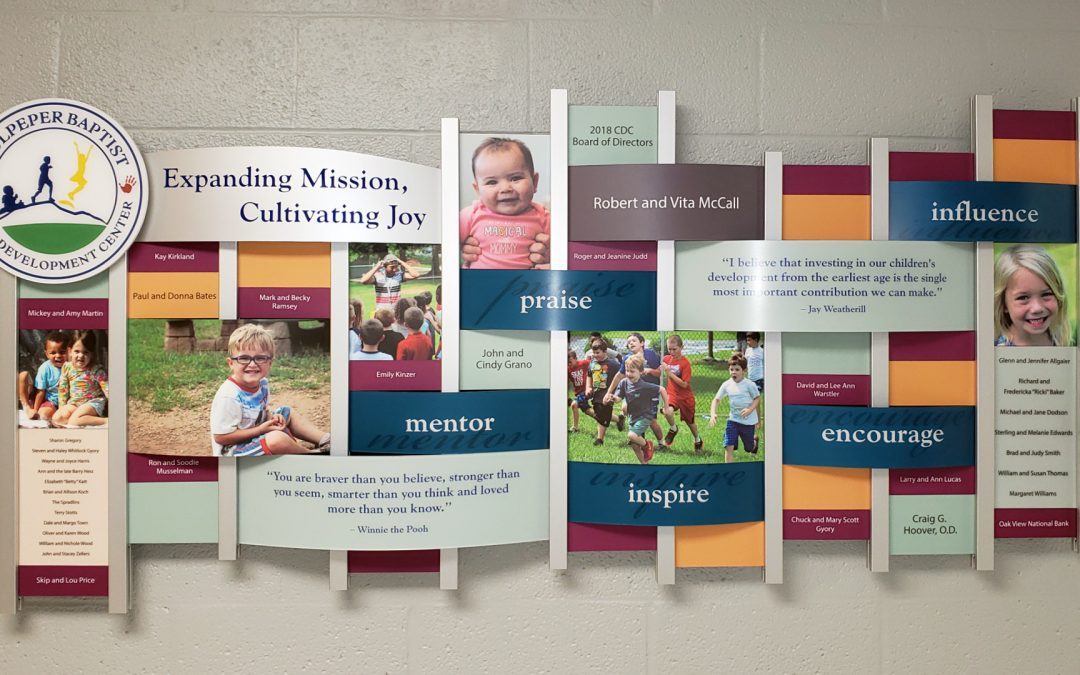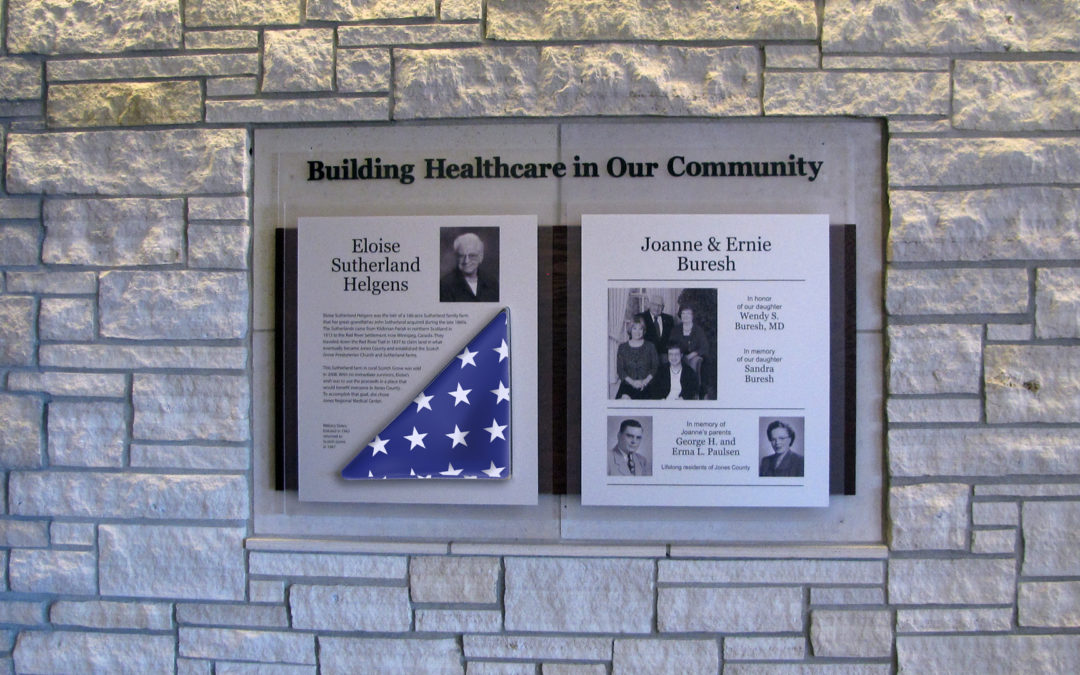
10 Donor Wall Project Planning Tips
1. Plan Early
The time to think about donor recognition isn’t when you’re planning the celebration party. Include a recognition wall display cost in your total fundraising effort and be sure to integrate the design into your architectural and signage program.
2. Don’t make promises you can’t keep
In the throes of raising funds, different promises are often made to different people – some impossible to keep. Begin by setting guidelines on how gifts will be recognized on the donor wall.
3. Head off anomalies, but design for variables
Hospitals, churches and care facilities often receive “in loving memory of” gifts. To control the variability of these listings, provide criteria for how such gifts can be stated on the recognition display. At the same time, plan typography for the longest and shortest naming scenarios.
4. Decide between a finite campaign or living donor wall
Designers need to know the maximum number of donor names that will likely appear before beginning concept development. If the wall is for a single capital campaign, set a firm deadline for inclusion, so names can be alphabetized and placed into donation categories. Design living walls to remain aesthetically pleasing at any stage and be sure to place them in locations that will allow for growth.
5. Allocate a percentage of the budget
Set aside a percentage of the total building budget for the donor wall construction. Avoid the appearance of overspending, but keep in mind that attractive walls make donors feel appreciated and encourage others to give in the future.
6. Complement the architecture
Even when a donor wall is treated as stand-alone art, designers need to work closely with the architect, lighting engineer and signage designers. The finished piece should feel integral to the environment and complement the proportions, materials, finishes and colors of the space.
7. Maintain type consistency
Don’t try to list names in type sizes equivalent to the size of the donations. Color-coding is a common way of protecting typographic consistency.
8. Consider future fabrication
Make sure that materials and craftsmanship are available and can be matched five, 10, 15 years hence.
9. Consider daily upkeep of the donor wall
Take weather resistance, vandalism and maintenance into account before approving the design and location.
10. Proofread, then proofread again.
Imagine etching 1000 names on a single sheet of glass and finding a typo that will remain into perpetuity. Check with donors about unusual name spellings, then assign several people to proofread at every stage of the process.

